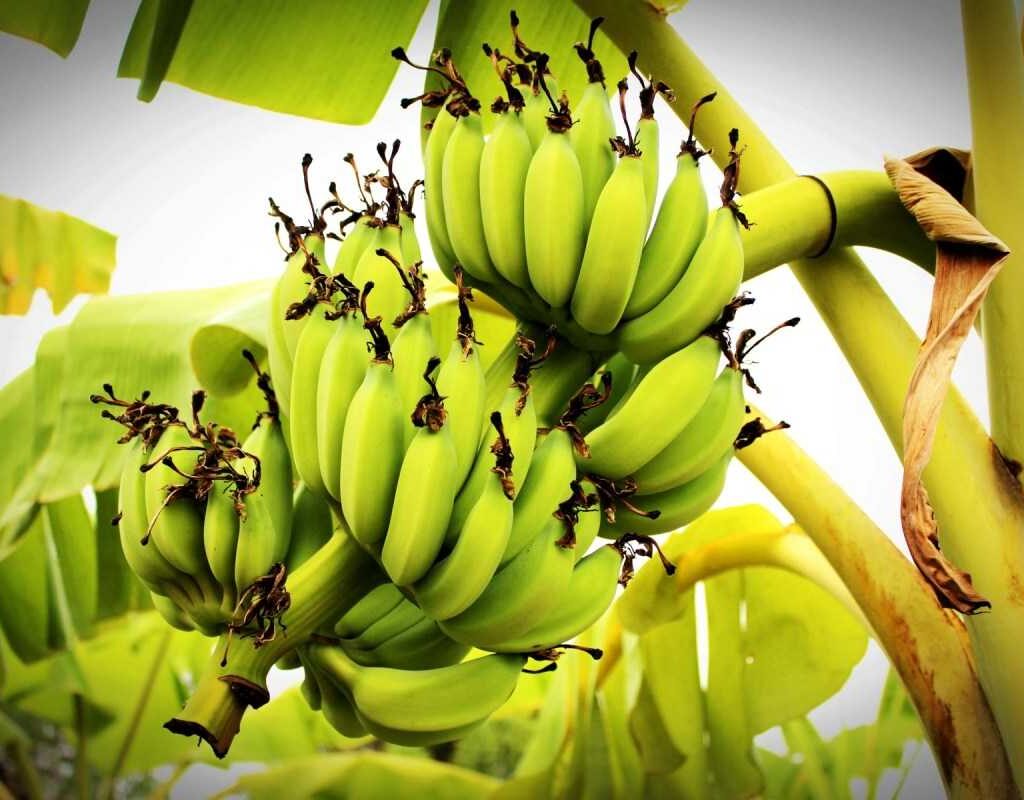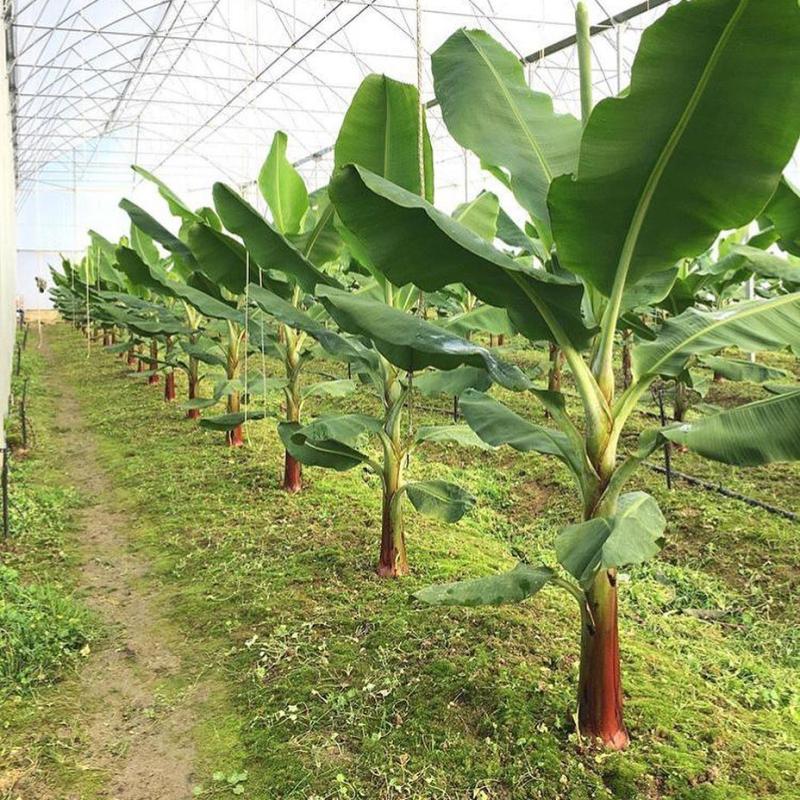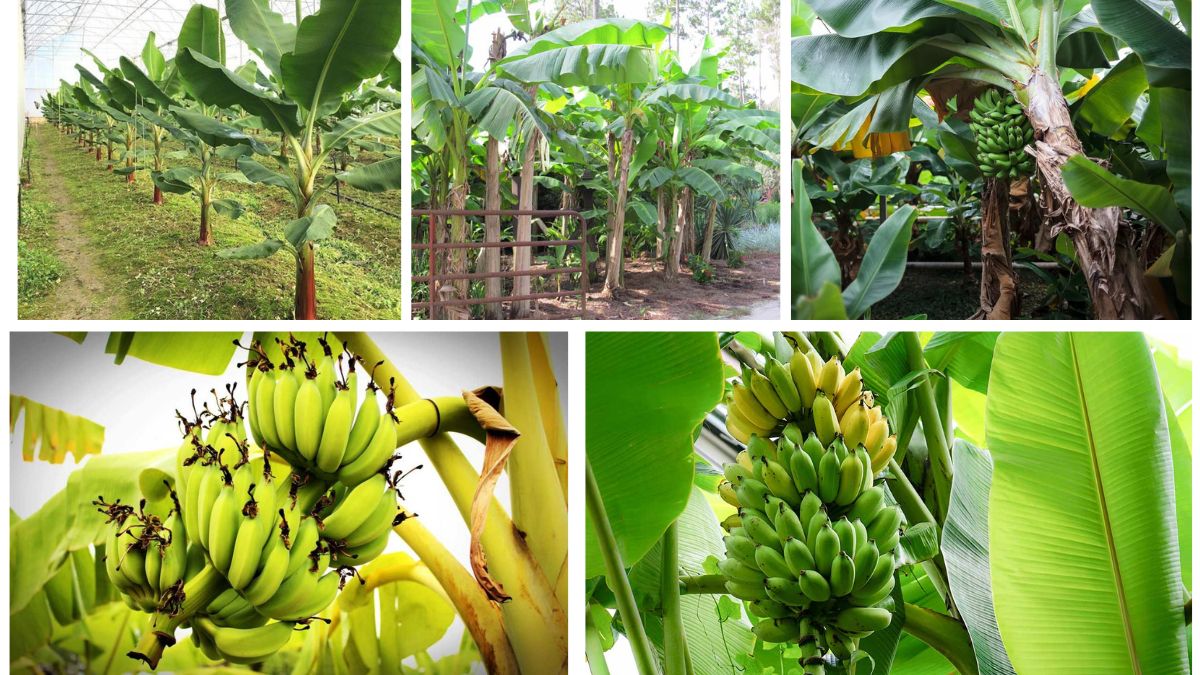Banana plants (Musa spp.) are not just a source of sweet, nutrient-rich fruits—they also bring an instant tropical feel to your home or garden. With their broad, lush green leaves and exotic charm, banana plants can transform any space into a tropical retreat. Many people assume banana plants are difficult to grow, but with the right care, they can thrive in containers indoors or outdoors in warm climates. Whether your goal is to harvest bananas or simply enjoy their ornamental beauty, this guide will walk you step by step through planting, care, and design ideas for creating your very own tropical paradise.
Understanding Banana Plants
Before you begin, it’s important to know that banana plants are technically giant herbs, not trees. Their “trunks” are made of tightly packed leaf sheaths, which is why they can grow quickly. Depending on the variety, banana plants can range from 3 feet tall dwarf varieties suitable for pots, to 20-foot-tall giants in the ground.
There are two main categories of banana plants you can grow:
- Fruit-producing varieties: These include cultivars like ‘Cavendish’ and ‘Lady Finger,’ which can bear edible bananas.
- Ornamental varieties: Such as Musa ornata or Musa velutina, which produce striking flowers and sometimes small, inedible bananas.
Knowing your purpose—whether it’s fruit harvests or decorative greenery—will help you choose the right type.

Step 1: Choosing the Right Variety
Not all bananas are suitable for every climate or indoor setting. Consider these popular types:
- Dwarf Cavendish – Great for containers and indoor growing, reaching about 6–8 feet tall.
- Rajapuri – Cold-tolerant and sturdy, ideal for areas with cooler winters.
- Musa Basjoo – Known as the hardy banana, it can withstand temperatures as low as -10°F (with protection).
- Ornamental Bananas – Musa ornata and Musa velutina, for colorful flowers and decorative fruits.
If you’re aiming for fruit, stick with Dwarf Cavendish or similar compact cultivars. For purely ornamental use, hardy and colorful varieties may be best.
Step 2: Planting Banana Plants
A. Growing Outdoors
- Soil Preparation: Bananas thrive in rich, well-draining soil with high organic matter. Loamy soil mixed with compost or aged manure works best.
- Sunlight: Choose a location with full sun—at least 6–8 hours of direct sunlight daily.
- Spacing: Allow at least 8–10 feet between plants to avoid overcrowding.
B. Growing Indoors (Containers)
- Pot Size: Start with a container at least 12–15 inches in diameter. As the plant grows, repot into larger containers (up to 20–24 inches).
- Soil Mix: Use a lightweight potting mix enriched with compost and perlite for good drainage.
- Placement: Position the plant near a south-facing window or under grow lights to ensure it gets enough light.
Step 3: Watering Requirements

Bananas are thirsty plants. Regular and consistent watering is the key to lush growth.
- Outdoor Plants: Water deeply 2–3 times per week during the growing season, keeping soil consistently moist but not waterlogged.
- Indoor Plants: Check the top 1–2 inches of soil; if dry, water thoroughly until water drains from the bottom. Avoid letting the pot sit in standing water.
- Humidity Needs: Indoors, bananas appreciate humidity. Mist leaves regularly or place a humidity tray nearby to mimic tropical conditions.
Step 4: Fertilizing Banana Plants
Banana plants are heavy feeders. They need balanced nutrition to support their fast growth and fruit production.
- Type of Fertilizer: Use a balanced fertilizer (10-10-10) or one slightly higher in potassium (important for fruiting).
- Frequency: Feed every 2–4 weeks during the active growing season (spring through summer). Reduce fertilization in winter when growth slows.
- Organic Options: Compost tea, banana peels, and well-rotted manure provide excellent organic nutrition.
Step 5: Pruning and Maintenance

- Removing Old Leaves: Trim away yellowing or dead leaves to keep the plant tidy and prevent disease.
- Sucker Management: Banana plants produce suckers (offshoots). Keep only one or two healthy suckers to replace the mother plant after fruiting, and remove the rest.
- Support: Large plants, especially with heavy fruit bunches, may need staking to prevent bending or breaking.
Step 6: Harvesting Bananas
If you’re growing fruiting varieties, here’s what to expect:
- Bananas take about 9–12 months from planting to fruiting.
- Once the flowers appear, bunches will form and gradually swell into bananas.
- Bananas are ready to harvest when they turn plump, and the angles on the fruit round out. Cut the entire stalk for ripening.
- After fruiting, the mother plant will die back, and the suckers will continue the cycle.
Step 7: Protecting Banana Plants in Winter

If you live in a cooler climate, winter protection is essential.
- Outdoor Plants: Mulch heavily around the base, wrap the pseudostem in burlap or frost cloth, and cover with straw or leaves.
- Container Plants: Move pots indoors before frost arrives. Keep them in a warm, sunny spot or under grow lights. Water less frequently but do not let the soil dry out completely.
Creating a Tropical Retreat with Banana Plants
Growing banana plants is not just about gardening—it’s about transforming your environment. Here are some creative ideas to make your garden or home feel like a tropical paradise:
- Pair with Other Tropicals: Plant bananas alongside palms, bird-of-paradise, and hibiscus for a lush, layered look.
- Add Water Features: A small fountain or pond near banana plants enhances the tropical ambiance.
- Container Retreat: Indoors, group banana plants with other large-leafed houseplants like monstera or philodendron to create a mini jungle.
- Outdoor Oasis: In warm climates, bananas can line a patio or pool area, creating natural shade and privacy.
- Lighting: Use string lights or lanterns around your banana plants for a magical evening tropical retreat.
Common Problems and Solutions

- Yellowing Leaves: Often caused by overwatering or nutrient deficiency. Adjust watering and feed regularly.
- Brown Leaf Tips: Usually due to low humidity indoors. Mist leaves or increase humidity levels.
- Pests: Watch for spider mites, aphids, and mealybugs. Treat with neem oil or insecticidal soap.
- No Fruit: May be due to insufficient light, poor nutrition, or the wrong variety for your climate. Ensure proper care and choose suitable cultivars.
Benefits of Growing Banana Plants
- Fresh Fruit: Harvest your own sweet bananas right at home.
- Ornamental Beauty: Their large leaves instantly add an exotic flair to any setting.
- Air Purification: Like many houseplants, banana plants improve indoor air quality.
- Shade and Privacy: Outdoors, they act as natural screens or shade plants.
- Therapeutic Gardening: Growing such lush, fast-growing plants can be rewarding and stress-relieving.
Final Thoughts
Banana plants are more than just fruit bearers—they are symbols of abundance, beauty, and the tropics. With the right care, you can grow them indoors or outdoors and create your very own tropical retreat. By selecting the right variety, ensuring proper sunlight, watering, feeding, and protecting them during colder months, you can enjoy both their lush greenery and, if lucky, a harvest of sweet bananas.
So whether you dream of a tropical corner in your living room or a lush backyard filled with broad banana leaves, this is your chance to bring the tropics home.




